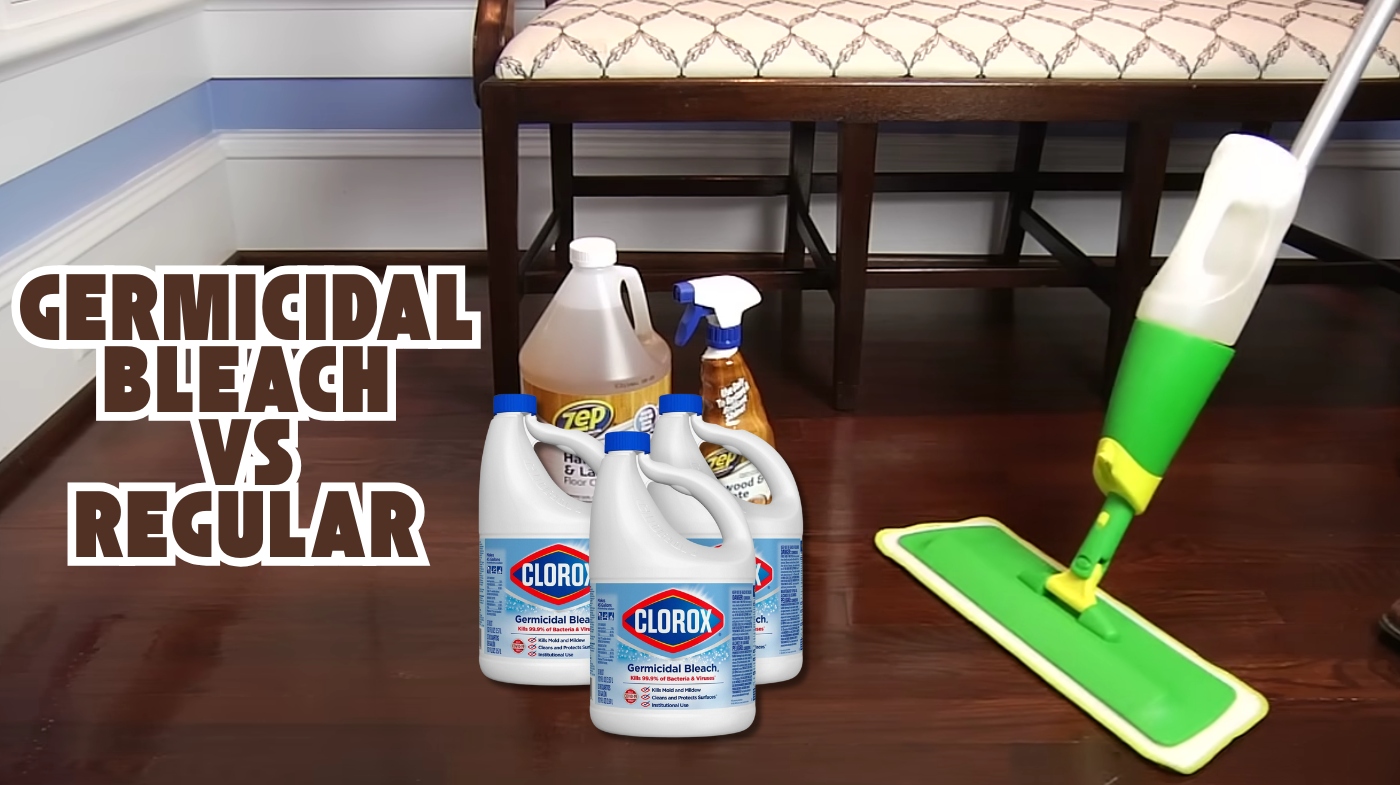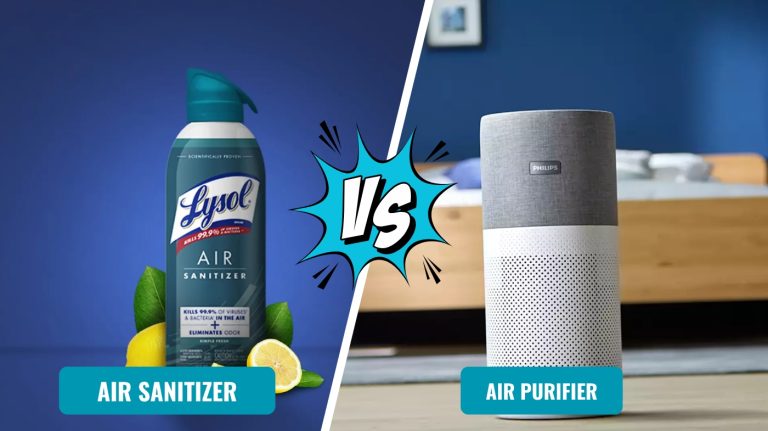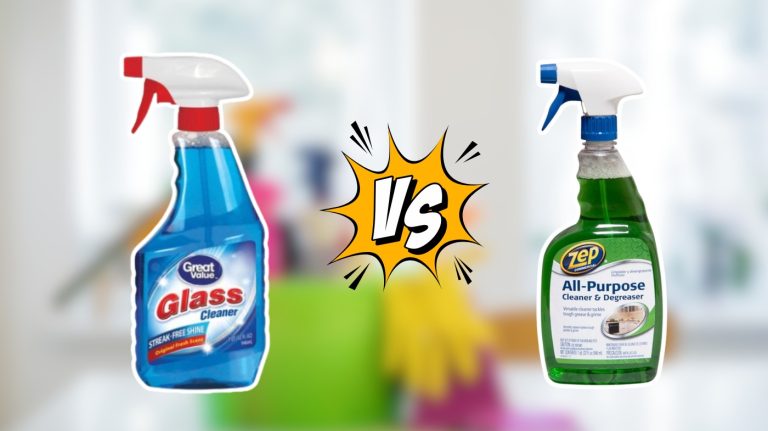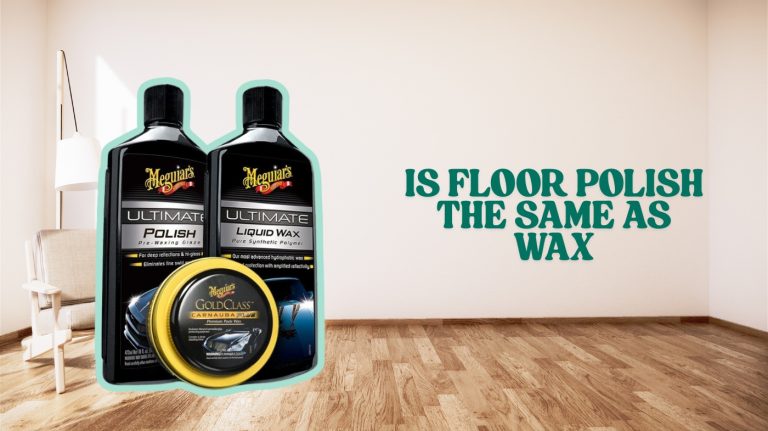Germicidal Bleach vs Regular: Key Safety and Usage Tips
You’ll find germicidal bleach contains about 8.25% sodium hypochlorite plus extra disinfectants, making it stronger and EPA-registered for killing tough pathogens like spores and viruses.
Regular bleach, around 5.25%, works well for general cleaning but isn’t as effective against resistant microbes.
Germicidal bleach requires stricter safety measures due to higher concentration and is common in medical settings, while regular bleach suits everyday sanitation.
Understanding these differences helps you choose the right product for your needs and safety—explore further details to optimize use.
- BLEACH: Clorox Germicidal Bleach can be used for disinfecting, sanitizing, deodorizing, and removes…
- DISINFECTANT: EPA registered to kill more than 70 pathogens; meets EPA criteria for use against…
- DEODORIZER: Germicidal bleach eliminates odor causing bacteria and helps remove mold and mildew as…
No products found.
Key Takeaways
- Germicidal bleach has a higher sodium hypochlorite concentration (~8.25%) and additional agents for enhanced disinfection compared to regular bleach (~5.25%).
- Germicidal bleach effectively kills resistant pathogens, spores, and viruses, while regular bleach targets common bacteria and viruses with limited spore activity.
- Germicidal bleach is used in medical and lab environments for high-level disinfection; regular bleach suits household cleaning and routine sanitation tasks.
- Germicidal bleach requires stricter safety precautions, including protective gear and ventilation, due to its higher oxidizing potential and irritant fumes.
- Germicidal bleach is more expensive but maintains potency longer, reducing waste, whereas regular bleach is cost-effective for general cleaning and laundry use.
Germicidal vs Regular Bleach Comparison Table
| Aspect | Germicidal Bleach | Regular Bleach |
|---|---|---|
| Sodium Hypochlorite Concentration | ~8.25% higher concentration | ~5.25% standard concentration |
| Primary Use | Medical settings, hospitals, labs | Household cleaning, laundry |
| Pathogen Effectiveness | Kills resistant spores, viruses, bacteria including C. difficile | Effective against common bacteria and viruses, limited spore activity |
| EPA Registration | EPA-registered for 39 pathogens | Not EPA-registered as disinfectant |
| Contact Time | Shorter contact time required | Longer contact time needed |
| Safety Requirements | Stricter PPE required, enhanced ventilation | Standard safety precautions |
| Applications | High-level disinfection, sterilization | General cleaning, stain removal, whitening |
Chemical Composition and Concentration Differences
While both regular bleach and germicidal bleach rely on sodium hypochlorite as their active ingredient, they differ considerably in chemical composition and concentration.
Regular bleach typically contains about 5.25% sodium hypochlorite aimed at cleaning and stain removal, whereas germicidal bleach features a higher concentration around 8.25% combined with additional disinfecting agents to ensure broad-spectrum antimicrobial efficacy.
Regular bleach lacks these supplementary agents and focuses on surface cleaning rather than disinfection.
The elevated sodium hypochlorite concentration in germicidal bleach enables shorter contact times and effective elimination of resistant pathogens, including spores.
Moreover, germicidal formulations incorporate stabilizers and deodorizing compounds that maintain potency and control odors.
These compositional distinctions affect handling, regulatory classification, and application effectiveness, making germicidal bleach a more potent disinfectant compared to standard household bleach.
Both types require cautious handling, including use in well-ventilated areas and protective gear to ensure safety during application.
It is also important to avoid mixing bleach with other cleaners to prevent toxic chemical reactions and ensure user safety.
Typical Use Cases and Environments
You’ll find germicidal bleach primarily in medical and laboratory settings where high-level disinfection is critical to control pathogens.
It is EPA-registered, with a registration number on the label, ensuring its effectiveness against microbes.
Regular bleach, on the other hand, suits household and commercial cleaning tasks that require effective sanitation but not sterilization.
When using strong cleaning agents like germicidal bleach, it’s important to follow manufacturer guidelines to prevent hazards and ensure safety.
Medical and Laboratory Settings
Because medical and laboratory environments demand stringent infection control, germicidal bleach plays a critical role in disinfecting hard, non-porous surfaces such as countertops, medical instruments, and autoclaves.
Its stabilized sodium hypochlorite concentration (around 8.25%) and added disinfectants guarantee rapid, broad-spectrum antimicrobial efficacy against bacteria, viruses—including MRSA and Norovirus—fungi, and resilient spores like Clostridium difficile.
This aligns with Avantor’s commitment to high standards of quality and safety in all operations.
You’ll find it EPA-registered for killing 39 pathogens, aligning with CDC guidelines. Compared to regular bleach, germicidal bleach reduces contact time and dosage, enhancing workflow efficiency in hospitals and labs.
Its ergonomic packaging supports controlled dosing, and safety protocols mandate PPE use during handling. Additionally, the use of pH-neutral cleaners is recommended to ensure compatibility with sensitive surfaces and prevent damage during disinfection.
This formulation’s compatibility with diverse medical surfaces and compliance with ISO9000 standards ensures reliable disinfection in critical, high-risk healthcare and laboratory settings.
Household and Commercial Cleaning
Germicidal bleach’s strong disinfecting properties make it a preferred choice in medical settings, but its application extends beyond healthcare into household and commercial cleaning environments.
When you clean at home or manage facility maintenance, understanding the differences helps you choose the right product.
Proper preparation and technique are essential when handling stronger cleaning agents like germicidal bleach to ensure safety and effectiveness.
Regular bleach is cost-effective and safe for everyday tasks, while germicidal bleach offers enhanced microbial kill suited for higher sanitation demands.
It is important to handle germicidal bleach with proper personal protective equipment due to its higher concentration.
- Household use: whitening fabrics, stain removal, and general surface sanitation
- Commercial cleaning: hospitals, food processing, and manufacturing environments
- Germicidal bleach: higher sodium hypochlorite concentration (10-15%) and stabilizers
- Regular bleach: lower concentration (3-8%) for routine cleaning with fewer safety concerns
- Germicidal bleach meets EPA and CDC standards for pathogen control including resistant spores
Select based on disinfection needs and safety considerations.
Effectiveness Against Pathogens
Although both germicidal and regular bleach contain sodium hypochlorite as the active agent, their effectiveness against pathogens differs markedly due to formulation and concentration variations.
Germicidal bleach targets a broader spectrum, including bacterial spores like C. difficile, fungi, and viruses, supported by additional disinfectants and optimized concentrations.
Regular bleach is effective mainly against common bacteria and viruses but shows limited efficacy on resistant spores.
| Pathogen Type | Germicidal Bleach | Regular Bleach |
|---|---|---|
| Bacteria | High efficacy | Moderate to high |
| Viruses | High efficacy | Moderate to high |
| Fungi | Effective | Limited |
| Bacterial spores | Effective (e.g., C. diff) | Limited |
| Regulatory Approval | EPA & CDC certified | General household use |
Choose germicidal bleach for stringent disinfection needs.
Safety Precautions and Handling Tips
You must wear impervious gloves and eye protection when handling both germicidal and regular bleach to prevent chemical burns and irritation.
Always use bleach in a well-ventilated area to minimize inhalation of harmful fumes, ensuring windows or doors are open.
Never mix bleach with ammonia or acids, as this combination releases toxic gases that pose serious health risks.
Proper ventilation is essential as it helps maintain effective air quality by reducing airborne chemical exposure.
Protective Gear Necessity
Whenever you handle bleach, especially the higher-concentration germicidal type, wearing appropriate protective gear is vital to prevent chemical injuries.
Germicidal bleach’s strong oxidizing properties increase risks of eye and skin damage, so you must consistently use proper protection.
Key protective gear essentials include:
- Safety glasses with side shields or chemical goggles to prevent eye splash injuries
- Impervious gloves (nitrile or neoprene) to avoid skin contact and chemical burns
- Chemical-resistant aprons and long-sleeved clothing to shield your body from splashes
- Immediate removal and separate washing of contaminated clothing to avoid secondary exposure
- Respiratory protection (NIOSH/MSHA-approved respirators) when airborne concentrations exceed safe limits
Additionally, it is important to avoid oversaturation during cleaning to prevent mold growth and other moisture-related hazards.
Ventilation and Mixing
Because both germicidal and regular bleach release fumes that irritate the respiratory tract, maintaining proper ventilation during use is essential.
You should open windows, use exhaust fans, or ensure continuous air exchange throughout application and afterward to dissipate vapors.
Ventilate longer after use, especially with germicidal bleach, due to its higher sodium hypochlorite concentration and added disinfectants.
Never mix bleach with ammonia or acidic cleaners; this creates toxic chloramines or chlorine gas.
Follow dilution instructions precisely, using only water unless otherwise specified. Avoid mixing with detergents or solvents to prevent chemical hazards.
Use fans or air purifiers with activated carbon filters in enclosed spaces, rotate personnel to limit exposure, and store bleach tightly sealed to reduce vapor release and maintain stability.
Proper ventilation also helps reduce lingering odor molecules that can persist after cleaning.
Compatibility With Laundry Applications
When selecting bleach for laundry, you must consider fabric compatibility and safety to prevent damage.
Germicidal bleach, while potent, suits mostly white or bleach-safe fabrics and requires precise dilution to avoid fiber weakening or color loss.
Regular bleach is safer for typical household fabrics but less effective against tough pathogens.
Both should never be applied undiluted. Proper use and application techniques help minimize risks such as fabric damage and fading.
Clorox Germicidal Bleach is EPA-registered and effective in laundry for whitening whites and removing tough stains like red wine, grass, dirt, and blood.
| Aspect | Germicidal Bleach |
|---|---|
| Fabric Compatibility | White, bleach-safe only |
| Dilution Required | Yes, ~¾ cup per washer load |
| Disinfection Level | High, effective against resistant pathogens |
| Machine Compatibility | Standard and HE machines; caution in older models |
| Risk of Fabric Damage | Higher if overdiluted or misused |
Frequently Asked Questions
Can Germicidal Bleach Be Safely Mixed With Other Cleaning Agents?
You shouldn’t mix bleach with other cleaning agents because it triggers dangerous chemical reactions. Combining bleach with ammonia produces toxic chloramine gases, while mixing it with acids releases harmful chlorine gas.
Both scenarios can cause severe respiratory issues, skin burns, and eye irritation. To stay safe, always use bleach alone as directed, guarantee proper ventilation, wear protective gear, and never combine it with ammonia-based, acidic, or detergent products.
How Should Germicidal Bleach Be Stored to Maintain Effectiveness?
You should store germicidal bleach in a cool, dry place below 68°F (20°C) to prevent chemical breakdown. Keep containers airtight, tightly sealed, and out of direct sunlight to maintain potency.
Use opaque or UV-resistant containers made of HDPE plastic, avoiding metal. Store bleach separately from incompatible chemicals, in a well-ventilated area, and out of children’s reach.
Regularly inspect containers for leaks or deterioration to guarantee effectiveness and safety.
Does Germicidal Bleach Have a Shelf Life Different From Regular Bleach?
You shouldn’t expect a different shelf life between germicidal and regular bleach. Both last up to one year when stored properly—cool, dry, and away from sunlight or heat.
Degradation starts around six months, reducing sodium hypochlorite concentration similarly in both types. Proper storage conditions, not bleach type, determine shelf longevity.
Keep containers sealed to minimize air exposure, and remember diluted solutions lose effectiveness after 24 hours regardless of bleach type.
Are There Environmental Impacts Unique to Germicidal Bleach Disposal?
You should know germicidal bleach disposal poses unique environmental risks. Its chemicals persist longer, bioaccumulate in aquatic organisms, and disrupt endocrine systems even at low levels.
Improper disposal can rapidly deplete dissolved oxygen in water, harming fish and plants. It also accelerates harmful algal blooms by killing beneficial microorganisms.
You must follow hazardous waste regulations strictly to prevent contamination of storm drains, lakes, and streams.
Can Germicidal Bleach Be Used on All Surface Types Without Damage?
Imagine using a strong cleaner like a sledgehammer on a delicate vase—it’s likely to cause damage. Similarly, you can’t use germicidal bleach on all surfaces without harm. It’s designed for hard, nonporous areas like countertops and toilets.
Using it on wood, fabrics, or colored surfaces risks discoloration, corrosion, or deterioration. Always dilute properly, test a small area first, and avoid prolonged exposure to protect your surfaces effectively.
Choose the Right Bleach for Maximum Disinfection Power
When choosing between germicidal bleach and regular bleach, remember germicidal bleach typically contains higher sodium hypochlorite concentrations—up to 6%, compared to 3-5% in regular bleach—making it twice as effective against tough pathogens like norovirus.
You’ll want to handle it with extra care due to its potency. Understanding these differences guarantees you select the right product for your needs, balancing effectiveness, safety, and cost without compromising disinfection standards.
- CLOROX HEALTHCARE BLEACH GERMICIDAL CLEANER: Specially designed for healthcare professionals, this…
- KILLS OVER 50 MICROORGANISMS: Clorox Healthcare Bleach Germicidal Cleaner Pull-Top Kills over 50…
- 1:10 DILUTION: Equivalent to 1:10 dilution of sodium hypochlorite solution for effective use against…
- – SET OF 2 BOTTLES, 1.2 LITERS EACH: This set includes two (2) bottles of bleach, with each…
- – 2-IN-1 CLEANING AND LAUNDRY SOLUTION: This bleach serves as a 2-in-1 bleach for cleaning and…
- – POWERFUL LAUNDRY BLEACH: This laundry bleach is specially formulated to give you the whitest…
Last update on 2025-12-27 / Affiliate links / Images from Amazon Product Advertising API










